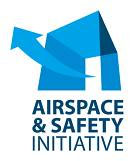CAA funds visibility trial

The UK Civil Aviation Authority (CAA) has agreed to fund research into making light aircraft and gliders more visible to other pilots.
 Through the Airspace & Safety Initiative (ASI), the CAA has engaged with the British Gliding Association (BGA) and the Ministry of Defence to explore ways of improving the visibility of light aircraft, especially gliders. Being constructed of white composite materials many of these aircraft can be very difficult to spot when airborne.
Through the Airspace & Safety Initiative (ASI), the CAA has engaged with the British Gliding Association (BGA) and the Ministry of Defence to explore ways of improving the visibility of light aircraft, especially gliders. Being constructed of white composite materials many of these aircraft can be very difficult to spot when airborne. The importance of the research was reaffirmed by the AAIB Report into a fatal 2009 midair collision between an RAF Grob 115E tutor, and a Standard Cirrus Glider over Drayton, Oxfordshire. (Seelinkfor AAIB Report.) The work will build on previous research carried out by Dr Tony Head of Cranfield University on behalf of the BGA.
The new research will involve a joint CAA/MoD trial, with support from the BGA, which will concentrate on the visual conspicuity of gliders and light aircraft. The CAA will fund the trial, while the RAFs No 22 (Training) Group will assist with the provision of motor gliders and crews from Royal Air Force Syerston. The Light Aircraft Association has also been asked to assist in work to make the types of small light aircraft which are constructed from composite materials more visible. Results are expected before the end of the year.
Phil Roberts, Deputy Director of Airspace Policy at the CAA, said: This research could have a significant impact on reducing future mid air collisions involving gliders and other small light aircraft. Improving airborne visibility of gliders will be no easy task, but we are pleased to be working with the BGA and the MoD to try and achieve that goal and build on the earlier work done by Cranfield University.




.png)


.jpg)

Comments
There are no comments yet for this item
Join the discussion